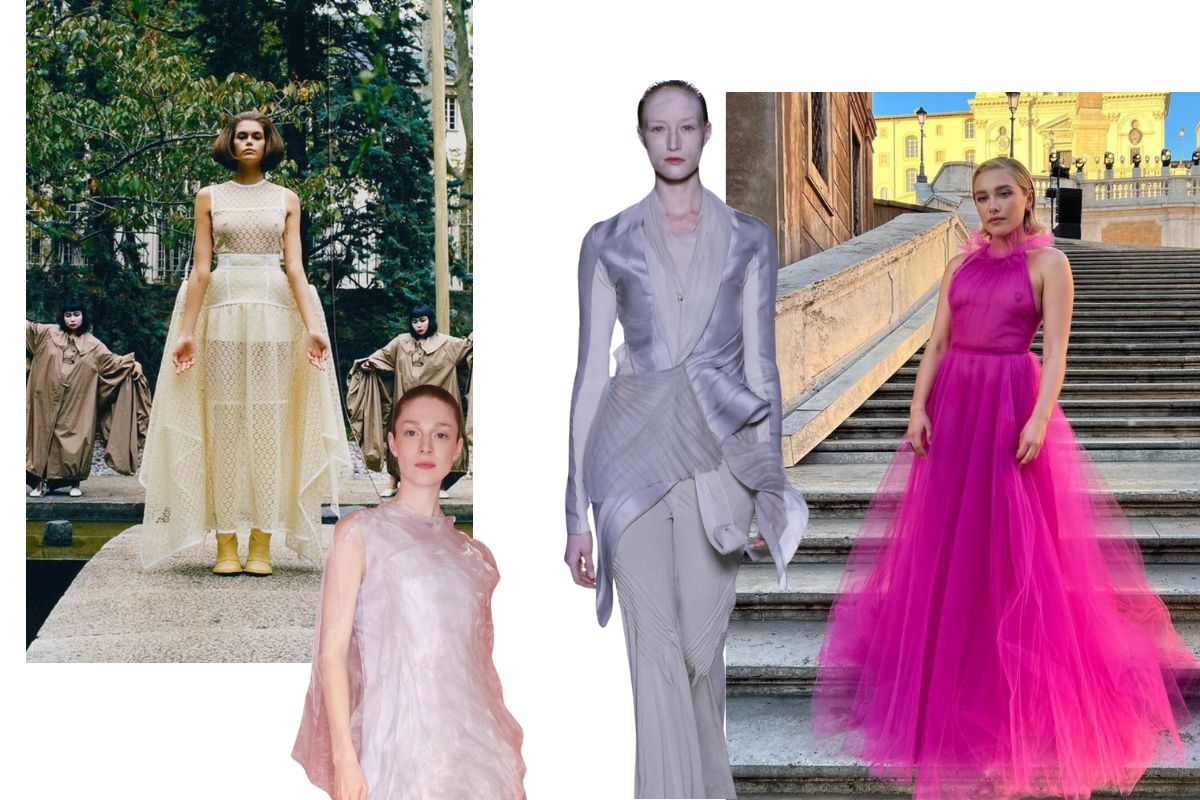
Fashion month’s afterglow lingers. With the Spring/ Summer 2024 collections leaving a lasting impression, sheer fashion has undoubtedly left us yearning for the skin-flashing revolution that has stormed the runway this year.
The use of such fabrics and designs, though perhaps initially surprising, is more than mere visual appeal. These clothes transcend simple provocation, offering a closer look at the interplay between artistic expression and the human form. Beyond the initial celebration of exposed skin, sheer - when used with intention - elevates itself from being a simple fabric.
Prada’s ethereal Spring/Summer 2024 collection personifies this concept in the flesh. Layers of translucent silks float around the body, creating a sense of both movement and liberation. It’s a conversation starter, a breakaway against the expected, and a testament to the boundaries pushed in the realm of fashion and artistic expression.
Sheer fashion holds quite the long and rebellious history. In the 70’s, it embodied the flamboyant spirit of gam rock, with public figures of the likes of David Bowie, challenging traditional notions of masculinity through sheerness. Fast forward to the 90s, where sheer took a grungier turn, imbued with rawness from designers like Alexander McQueen, where his designs explored the interplay between vulnerability and strength.
Today, the fabric that might not hold such physical weight, is having quite the major moment and weight on society. A personal favourite moment was Florence Pugh’s striking pink Valentino gown from 2022, perfectly exemplifying sheer power as a stand-alone. The strategic use of sheerness on the top half of the dress elevated the entire design to re-morph and have fun with the concept of modesty, as technically “they are covered” Pugh stated. It was a moment that Pugh embodied perfectly with ownership and unwavering confidence. As masterfully demonstrated, such fashion offers a powerful act of reclamation, or simply creating depth and fascination.
View this post on Instagram
As sheer continues to command attention on runway, and on the streets, its significance can be beyond aesthetics. A proposition of liberation and modern femininity. Where sheer defiance, not fabric, became the sartorial language for Creative Directors last season.
Below, in light of sheer trending on the runway, we have rounded up some of our favourite sheer looks over time.
Calvin Klein Ready-to-Wear Autumn/winter 1997
View this post on Instagram
This collection epitomised the minimalist aesthetic of the 90’s. Sleek slip dresses in a bias-cut silhouette triumphed this collection. Minimalistic and grunge, sheer in the 90s was timeless and understatedly elegant. Here, a black satin dress was a prime example, one that Calvin Klein model at the time Kate Moss, was well known at modelling sheerness, off and on the runway.
Alexander McQueen Spring/Sumer 1999
View this post on Instagram
McQueen was already a master at executing dramatic designs. The late 90’s early 2000’s was an era that was more body conscious and provocative. While low-rise pants, fitted blazers and shirts proved dominant in this collection, his play on materials and layering on the colour hues of black and white, proved exemplary of McQueen’s visionary style. Translucent billowing trains and fish-scale like skirts, allude to the body underneath.
Rick Owens Spring/ Summer 2009
View this post on Instagram
Fashion saw a rise in deconstruction and experimentation in the mid 2000’s. Rick Owens, known for his gothic dark collections is always one to create an avant-garde appearance, sheerness only adds to this drama.
Loewe Spring/ Summer 2020
View this post on Instagram
Jonathan Anderson, prolific in his playful ingenuity and artistic curations, matched opaque slip dresses with patchwork. Alluring silhouettes, no two the same in this collection, reflected the gowns worn by Spanish royalty through lace and bold colour hues.
Prada Spring/ Summer 2024
View this post on Instagram
Re-imagined tailoring, where gossamer-thin silks added romance to a collection dedicated to power and femininity. A proposition of liberation to the body and a challenge on classical tailoring.



